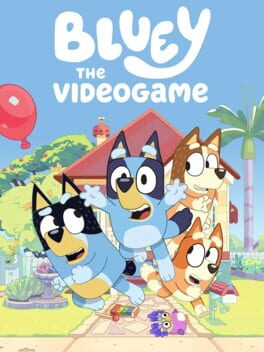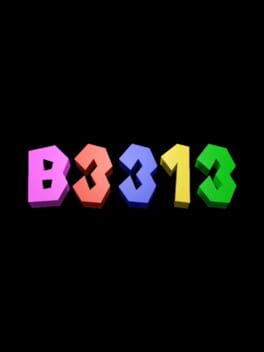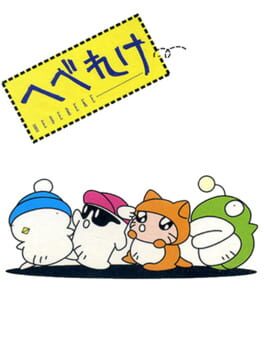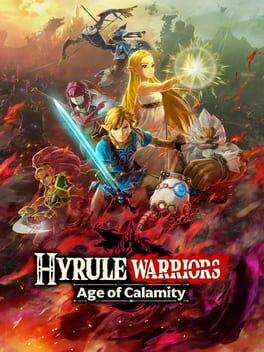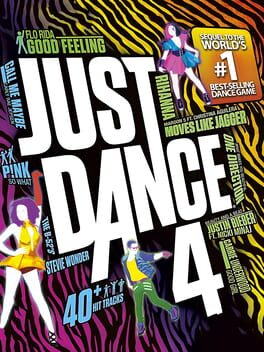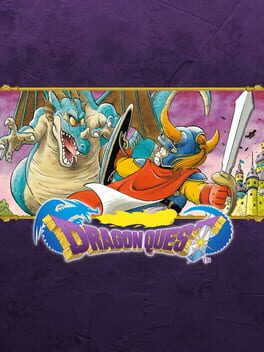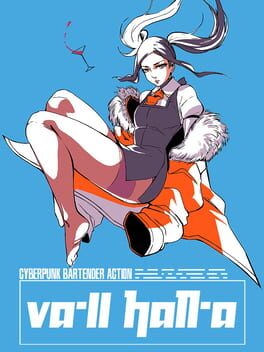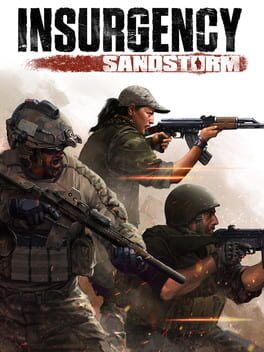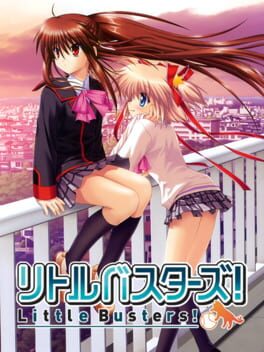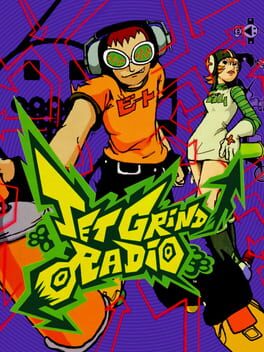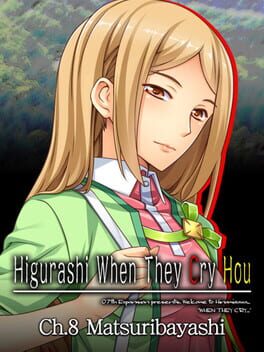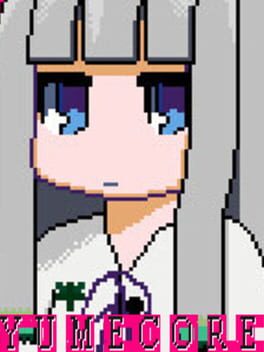FunBus
160 Reviews liked by FunBus
Bluey: The Videogame
2023
Old School
2023
B3313
2021
[Played through the Unabandoned A2 version.]
Remember the Super Mario 64 iceberg?
As someone who grew up on the game and its DS port, mid-2020 was a very fun time period for me. The renewed interest in the game and its development, with the gigaleak serving as its climax, was genuinely very entertaining to watch unfold; Luigi’s model being uncovered 24 years and 01 months after the game’s Japanese release was my “you had to be there” moment.
Anyways, all that resulted in a lot of mythology spawning around the game and its heavily storied development. A lot of it shares blood with creepypastas and general modern internet rumors - the kinda stuff you’d hear on the playground, but lamer and less believable. Nearly four years later, B3313 embraces all that mythology and interest in Super Mario 64 and turns it into a weird, dense Yume Nikki-esque soup.
This romhack is impossible to review comprehensively. It pulls from the preview builds, the gigaleak’s assets, the iceberg, and a lot of internet mythos, as I previously mentioned. As such, my review will consist mostly of broad strokes.
Starting with some of the negatives, the game’s controls are deliberately worse than SM64. Mario is really slippery (especially when skidding, he goes on for way too long), and at first, you don’t have the backflip, long jump, and breakdance kick. The triple jump gets the slow fall twirl thing you get from stomping on Fly Guys and Spindrifts in exchange for a bit of height. That’s good for distance, but Mario cannot grab ledges while slow falling. Adapting to this was a nightmare.
I understand the decision to alter the controls like this - the controls are pulled from the Space World demo of the game. They were retooled for the final release precisely because of how loose they felt. Level design isn’t kind all the time either, with a lot of jumps you barely have the height for. Normally, I wouldn’t complain about difficult level design, but the slipperier controls and very precise jumps makes it worth noting and a source of annoyance. I understand and respect why the decision to make the controls like this was made, but I miss the precision the final game had.
The camera can be particularly atrocious. B3313’s original courses feature level design that’s far more claustrophobic than SM64’s - a lot of this is intentional because of the atmosphere it shoots for, but a lot of the time that sort of level design combined with the awful camera getting stuck results in platforming that’s not unnerving or “living a dream”-y, but rather just annoying. A lot of the time, when twirling and slow falling after a triple jump, the camera likes to point up, which is the one angle that’s not useful when jumping, and that led to my death more than once. Yes, I agree SM64’s camera can be particularly insufferable, but I ran into this way more frequently in B3313 and I feel I touched maybe what, 10% of the total areas?
Moving on, B3313’s scope is the main selling point and it delivers. It’s absurdly cryptic and expansive, with so many layers of places to go that if you fuck up and die it can take a long time to get back to where you were. This is what I meant by the game being impossible to review comprehensively - so many areas with so many warps that it’s impossible to keep a map of them in your head. Granted, the hack indirectly recommends against this, with Yoshi saying to “just let it happen, like a dream.”
The game leans hard into the “every copy is personalized” meme, and the amount of sheer variety in stuff does help with the feeling it’s pulling from your mind. There are a lot of different versions of the 15 courses found in the final game, ranging from small differences in geometry and color palette to entirely new weather and features added. There are also a lot of variants of the castle and its interior halls (with the hud even changing depending on what “era” of the game you find), with access to each being granted differently, as well as a many, many all-new courses. It’s all highly labyrinthian, and fucking up and dying can toss you many, many minutes back. The game even uses your system time to activate a few effects, which is pretty impressive to me!
The most fascinating part about it to me, though, is how… dreamlike it all feels. Areas vary wildly in size, with some being tight mazes and others being enormous. Combined with the constant fog, endless-feeling amount of doors and paths, and the always at least slightly-off-kilter music contributes heavily to that feeling that you’re playing a dream of the game… but with beta elements mixed in.
Where the game loses me a bit is in its horror elements. I get why they were included - analog horror and conspiracies were prominent elements of the mythos that formed around the game in mid-2020. And, to its credit, the game seems to pull near-entirely from those sources; from my research, a lot of it originates from Greenio’s “Super Mario 64: CLASSIFIED” series (even including the AI core asking to be destroyed), with some references to older creepypastas and hacks like sm64.z64, BUP 64, and Faceless.
I’m just not too confident in how the game handles its horror aspects. There’s a lot of warning when you get to the areas with horror elements (sometimes to the point of there being “no entry” signs, unusually dark color palettes, and text boxes telling you to piss off), so they’re easily avoided, but at the same time, pulling off scares in SM64 is kinda really difficult aside from jumpscares? Mario can just schmoove and parkour around, and it kinda takes the edge away when the evil entity that’s chasing you struggles to keep up with long jumps and dive recovers.
I’m also not too big on most of the big scares causing crashes as well. There are only a few “true” jumpscares (one of which I had the misfortune of running into about an hour into my playthrough; if you see faceless Toads, turn back) but being forced a trillion layers back is already punishing enough for not being cautious enough and letting curiosity get the best out of you. Forcing a reset just adds a few more seconds to that.
Anyways, there’s actually a way to progress in this and “beat” it. Technically 100% is achievable, but going for all 450 stars (!) in this spaghetti mess of a game sounds like torture, so I’ll keep it at technically. Back to it, beating Bowser and other bosses gives the player Red Stars. Collect all 13 of them, and you can take the long ass route to the ending. Collecting Red Stars is also crucial to unlocking Mario’s full moveset which… is weird? I’d rather have all the tools at the start to explore these big ass areas.
Outside of that? No real progression aside from unlocking Green Stars at 120 (I think). This ultimately works in the hack’s favor and helps sell the “endless dream” aesthetic, though - getting lost and exploring is part of the appeal. If I recall correctly (I may be wrong on this), older versions had the final level be accessed by climbing up and up in the castle lobbies, and I feel I prefer that approach; there’s a clear, intuitive path the player can follow to beat Bowser for good, but going up and up also reveals many of the paths the player can explore and lose themselves in. Ultimately though, it’s not like I’m playing this to beat it; once I got the long jump and backflip, I just resumed walking around aimlessly trying to find new stuff.
On a last note, the music is… weird. I said it uses a lot of off-kilter versions of the Super Mario 64 soundtrack, but it goes a step further and includes a few tracks from other Mario games that were released before it. A lot of the remixes are good; out of those, “Eel Graveyard” and “Dry Town” are the absolute highlights for me. On the other hand, there’s a few tracks I found intolerable, particularly one used for a few volcano areas. You can make familiar music sound like a distant memory and what you’d hear in a dream without making it actually headache-inducing - most of the game does that!
Wrapping it up, B3313 is one of a kind. The only other prominent hack I know of that does something like this is “Breaking the Barrier”, but that feels extremely limited in comparison. If you’re looking for a tightly-designed romhack, I’d suggest looking elsewhere. Instead, I’d recommend this for those of you who lived through and witnessed the internet mythology surrounding SM64 in mid-2020; B3313 is not only a love letter to that time period, but also a near-perfect snapshot of it, and the experience is generally enhanced by at least knowing the context which spawned this romhack.
I’m not giving this a star rating, though. I absolutely recommend playing this if you were in that mid-2020 SM64 niche like I was, and it remains a really impressive romhack from a technical standpoint all around (seriously the amount the game was modified and expanded is insane), but I dunno if I give it a high rating because of that, or if I give it a lower rating because of the slippery controls, camera that likes to not cooperate and get stuck, and the sometimes grating music. Yes, I know that stuff’s on purpose, but purposefully unpleasant things are still unpleasant!
Play it for yourself if you think it looks cool is my recommendation. I think it’s worth a shot.
Remember the Super Mario 64 iceberg?
As someone who grew up on the game and its DS port, mid-2020 was a very fun time period for me. The renewed interest in the game and its development, with the gigaleak serving as its climax, was genuinely very entertaining to watch unfold; Luigi’s model being uncovered 24 years and 01 months after the game’s Japanese release was my “you had to be there” moment.
Anyways, all that resulted in a lot of mythology spawning around the game and its heavily storied development. A lot of it shares blood with creepypastas and general modern internet rumors - the kinda stuff you’d hear on the playground, but lamer and less believable. Nearly four years later, B3313 embraces all that mythology and interest in Super Mario 64 and turns it into a weird, dense Yume Nikki-esque soup.
This romhack is impossible to review comprehensively. It pulls from the preview builds, the gigaleak’s assets, the iceberg, and a lot of internet mythos, as I previously mentioned. As such, my review will consist mostly of broad strokes.
Starting with some of the negatives, the game’s controls are deliberately worse than SM64. Mario is really slippery (especially when skidding, he goes on for way too long), and at first, you don’t have the backflip, long jump, and breakdance kick. The triple jump gets the slow fall twirl thing you get from stomping on Fly Guys and Spindrifts in exchange for a bit of height. That’s good for distance, but Mario cannot grab ledges while slow falling. Adapting to this was a nightmare.
I understand the decision to alter the controls like this - the controls are pulled from the Space World demo of the game. They were retooled for the final release precisely because of how loose they felt. Level design isn’t kind all the time either, with a lot of jumps you barely have the height for. Normally, I wouldn’t complain about difficult level design, but the slipperier controls and very precise jumps makes it worth noting and a source of annoyance. I understand and respect why the decision to make the controls like this was made, but I miss the precision the final game had.
The camera can be particularly atrocious. B3313’s original courses feature level design that’s far more claustrophobic than SM64’s - a lot of this is intentional because of the atmosphere it shoots for, but a lot of the time that sort of level design combined with the awful camera getting stuck results in platforming that’s not unnerving or “living a dream”-y, but rather just annoying. A lot of the time, when twirling and slow falling after a triple jump, the camera likes to point up, which is the one angle that’s not useful when jumping, and that led to my death more than once. Yes, I agree SM64’s camera can be particularly insufferable, but I ran into this way more frequently in B3313 and I feel I touched maybe what, 10% of the total areas?
Moving on, B3313’s scope is the main selling point and it delivers. It’s absurdly cryptic and expansive, with so many layers of places to go that if you fuck up and die it can take a long time to get back to where you were. This is what I meant by the game being impossible to review comprehensively - so many areas with so many warps that it’s impossible to keep a map of them in your head. Granted, the hack indirectly recommends against this, with Yoshi saying to “just let it happen, like a dream.”
The game leans hard into the “every copy is personalized” meme, and the amount of sheer variety in stuff does help with the feeling it’s pulling from your mind. There are a lot of different versions of the 15 courses found in the final game, ranging from small differences in geometry and color palette to entirely new weather and features added. There are also a lot of variants of the castle and its interior halls (with the hud even changing depending on what “era” of the game you find), with access to each being granted differently, as well as a many, many all-new courses. It’s all highly labyrinthian, and fucking up and dying can toss you many, many minutes back. The game even uses your system time to activate a few effects, which is pretty impressive to me!
The most fascinating part about it to me, though, is how… dreamlike it all feels. Areas vary wildly in size, with some being tight mazes and others being enormous. Combined with the constant fog, endless-feeling amount of doors and paths, and the always at least slightly-off-kilter music contributes heavily to that feeling that you’re playing a dream of the game… but with beta elements mixed in.
Where the game loses me a bit is in its horror elements. I get why they were included - analog horror and conspiracies were prominent elements of the mythos that formed around the game in mid-2020. And, to its credit, the game seems to pull near-entirely from those sources; from my research, a lot of it originates from Greenio’s “Super Mario 64: CLASSIFIED” series (even including the AI core asking to be destroyed), with some references to older creepypastas and hacks like sm64.z64, BUP 64, and Faceless.
I’m just not too confident in how the game handles its horror aspects. There’s a lot of warning when you get to the areas with horror elements (sometimes to the point of there being “no entry” signs, unusually dark color palettes, and text boxes telling you to piss off), so they’re easily avoided, but at the same time, pulling off scares in SM64 is kinda really difficult aside from jumpscares? Mario can just schmoove and parkour around, and it kinda takes the edge away when the evil entity that’s chasing you struggles to keep up with long jumps and dive recovers.
I’m also not too big on most of the big scares causing crashes as well. There are only a few “true” jumpscares (one of which I had the misfortune of running into about an hour into my playthrough; if you see faceless Toads, turn back) but being forced a trillion layers back is already punishing enough for not being cautious enough and letting curiosity get the best out of you. Forcing a reset just adds a few more seconds to that.
Anyways, there’s actually a way to progress in this and “beat” it. Technically 100% is achievable, but going for all 450 stars (!) in this spaghetti mess of a game sounds like torture, so I’ll keep it at technically. Back to it, beating Bowser and other bosses gives the player Red Stars. Collect all 13 of them, and you can take the long ass route to the ending. Collecting Red Stars is also crucial to unlocking Mario’s full moveset which… is weird? I’d rather have all the tools at the start to explore these big ass areas.
Outside of that? No real progression aside from unlocking Green Stars at 120 (I think). This ultimately works in the hack’s favor and helps sell the “endless dream” aesthetic, though - getting lost and exploring is part of the appeal. If I recall correctly (I may be wrong on this), older versions had the final level be accessed by climbing up and up in the castle lobbies, and I feel I prefer that approach; there’s a clear, intuitive path the player can follow to beat Bowser for good, but going up and up also reveals many of the paths the player can explore and lose themselves in. Ultimately though, it’s not like I’m playing this to beat it; once I got the long jump and backflip, I just resumed walking around aimlessly trying to find new stuff.
On a last note, the music is… weird. I said it uses a lot of off-kilter versions of the Super Mario 64 soundtrack, but it goes a step further and includes a few tracks from other Mario games that were released before it. A lot of the remixes are good; out of those, “Eel Graveyard” and “Dry Town” are the absolute highlights for me. On the other hand, there’s a few tracks I found intolerable, particularly one used for a few volcano areas. You can make familiar music sound like a distant memory and what you’d hear in a dream without making it actually headache-inducing - most of the game does that!
Wrapping it up, B3313 is one of a kind. The only other prominent hack I know of that does something like this is “Breaking the Barrier”, but that feels extremely limited in comparison. If you’re looking for a tightly-designed romhack, I’d suggest looking elsewhere. Instead, I’d recommend this for those of you who lived through and witnessed the internet mythology surrounding SM64 in mid-2020; B3313 is not only a love letter to that time period, but also a near-perfect snapshot of it, and the experience is generally enhanced by at least knowing the context which spawned this romhack.
I’m not giving this a star rating, though. I absolutely recommend playing this if you were in that mid-2020 SM64 niche like I was, and it remains a really impressive romhack from a technical standpoint all around (seriously the amount the game was modified and expanded is insane), but I dunno if I give it a high rating because of that, or if I give it a lower rating because of the slippery controls, camera that likes to not cooperate and get stuck, and the sometimes grating music. Yes, I know that stuff’s on purpose, but purposefully unpleasant things are still unpleasant!
Play it for yourself if you think it looks cool is my recommendation. I think it’s worth a shot.
Hebereke
1991
I gotta say, I don't really give Sunsoft the highest praise and I kind of feel bad. Outside of Rough World and Waku Waku 7, all their other games to me are like a 7/10 or lower. I don't hate them or anything but I guess maybe I'm strict on scores sometimes? I'm not sure. I finally got a pack of translations and Hebereke was one of them, I've always wanted to try it so I gave it a go and I'm gonna say it early, this is my favorite Sunsoft game.
This is an early take on a game style like Metroid where you recruit new characters and get items and upgrades to go through each part of the world. It's pretty fun though it can get a little tiring if you go the wrong way, I got lost at one point like an idiot. While Hebereke isn't perfect, what makes me love it is just how much fun and relaxing it can be. It helps it's one of their easier games they've made.
I really love the presentation, this was when Sunsoft was really at their A game with the hardware though it does come at a cost of the framerate being a little poor at times. All the characters are just really fun to look at, especially Hebe. Which they sadly replaced in the PAL released with a way less cute design. Same with O-Chan who went from a human in a cat onesie to a lizard. The music is also phenomenal, some of the best on the Famicom.
I could go on but I probably shouldn't drag out the review, give it a chance if you're curious, it's sadly expensive to get a Famicom copy of this nowadays so you might need to emulate it. Though this game is apparently getting ported to Switch and PS4 so maybe wait and see if the emulation on those are good. (update, it's coming out next week. Kind of crazy just how long they took compared to when the review came out when it was on a different page).
This is an early take on a game style like Metroid where you recruit new characters and get items and upgrades to go through each part of the world. It's pretty fun though it can get a little tiring if you go the wrong way, I got lost at one point like an idiot. While Hebereke isn't perfect, what makes me love it is just how much fun and relaxing it can be. It helps it's one of their easier games they've made.
I really love the presentation, this was when Sunsoft was really at their A game with the hardware though it does come at a cost of the framerate being a little poor at times. All the characters are just really fun to look at, especially Hebe. Which they sadly replaced in the PAL released with a way less cute design. Same with O-Chan who went from a human in a cat onesie to a lizard. The music is also phenomenal, some of the best on the Famicom.
I could go on but I probably shouldn't drag out the review, give it a chance if you're curious, it's sadly expensive to get a Famicom copy of this nowadays so you might need to emulate it. Though this game is apparently getting ported to Switch and PS4 so maybe wait and see if the emulation on those are good. (update, it's coming out next week. Kind of crazy just how long they took compared to when the review came out when it was on a different page).
Just Dance 4
2012
Dragon Quest
2004
You know how it is. The most an artist's death has gotten me to cry in a long time - the infectious creative energy I've felt lent down to me from his work is something that'll never leave me. And just like everyone else, I've found myself pouring through dozens and dozens of heartfelt tributes to the man's legendary career. But reading it all got me thinking...ain't the meat and potatoes reputation Dragon Quest has earnt itself kind of like, an error? An impossibility?
So, lemme ask you a question: when's the first time you saw something that made you think "Dragon Quest is cool"? I couldn't tell you what mine was, but recently finishing a full playthrough of the original NES Dragon Warrior pulled me back into the correct reality in which this series was not "generic", but an outlier in style. Toriyama's enthusiasm to play the hits puts the personality on display in its monsters maybe 20 years ahead of the curve. As an aside, I also recommend to anyone playing any older Dragon Quest to look up some scans of the old manuals; the effortless coolness of his artstyle had already bled into DQ's identity.
You could call this game a "grind", but the grind is the gameplay and the gameplay is good. Each individual battle is simple to solve in a bubble, but enemies are split between the ones you can defeat with or without expending resources - instantly spiraling the world into an ever-evolving puzzle to solve. Planning out a trajectory of travel immediately prompts a dizzying amount of dice rolls in your head: how many resources should I spend to gain EXP? How much should I dice roll running away, and how much magic will I have left to heal myself up considering both the expected and unexpected outcomes? Inner workings filled with perfect math to never quite satisfy things with a clear answer; but what raises this from good to great is how through my entire time playing the game, I always undershot my potential. Enemies that are apparently stronger than you can be taken down with perfect resource management, finding consistency in a haze of lottery tickets that makes you feel genius every time you take one down and keep a little more magic for the rest of the trip than your last encounter with the same guy.
And in comparison to how grinding is often characterized as a boring chore-like task, I think playing this game is way closer to exhausting - you can do a good run, and do another, and then lose to a Skeleton you've already defeated 10 times and now half your gold is gone. You probably haven't even made it halfway to the level you want yet! But for every moment of flighty confusion, there's also a moment where you get to level 3, gain heal, and kill the first slime you see in one hit.
and that's how they get you
Random encounters are most frequently characterized as one of those unsavory bits of RPG we chop off, but playing this helped click into place how much texture can be applied to identical floor tiles simply by the difference in looming threat. The invisible encounter sheet constantly shifting under your feet giving cool and hostile sensation to each step, and when you realize you can kill something that once scared you off, the level design changes. Reinforces the process of seamless non-linear exploration with an information game unique to the format - a grind made engaging by the real question being where to even grind in the first place. This is an RPG with no vestigial limbs. Every single part of an RPG you've questioned the integral elements of is present working in perfect harmony with each other; last year, I found myself actively frustrated playing a newly released turn-based RPG in which the mindlessness of each individual encounter serves no purpose. Without long-term resource management, of course random encounters are boring! Or, in contrast to RPGs where levels feel like guided progress, here, lower level enemies to begin to run away, breaking the consistency of previously successful sources of experience and gold. Now, with every moment of newly found strength matched by a push out of my comfort zone, I'm like "ohhh i get it now"
and they got me
This is all coming from a relatively young person's perspective (i turned 22 around when i wrote most of this happy birthday me :D ), so there's this tough balance to reach when it comes to simultaneously embracing that sometimes, traits of oldness are endearing to me, and making sure I don't sound like I am looking down on something, or it's a novelty.
In the past few months, I ended up playing a bunch of games from the mid-late 2000s, and it was easy to lose yourself in a sea of fifteen year old Gamefaqs threads, and chat with people just a bit older than me who experienced all these things organically in their childhood. Especially due to growing up with games from the same era, it was easy for me to imagine myself playing these as a kid, wondering how this could've effected me sooner. Dragon Quest on the contrast is for a bit older of a generation than me, especially with some of its strongest cultural imprint existing beyond language barrier. I played this alongside someone close to me - we honestly couldn't stop gushing to each other about how satisfying the sleuthing was as we kept a million notes marked down. There's a great moment in which a secret that's visibly hinted to you in one of the last towns has an equivalent but invisible secret in one of the first towns; this is one of the oldest games I've played with a strong design language. Things like this got us close to that ideal you hear of pen and paper hint tracking. Eventually, it became natural to feel like playing the game like this was making me fall into the past footsteps of someone else; it's hard not to romanticize it like we were 2 little kids playing the game lit by nothing but the humming static of a CRT. And even though I've literally known people not even a decade older than me that grew up with this game, it's immersing myself in a distinctly different time-frame from usual that makes that era feel so far away. It's that solidarity with a perspective just out of reach that starts positively haunting the game with the ghost of lived experience.
So, lemme ask you a question: when's the first time you saw something that made you think "Dragon Quest is cool"? I couldn't tell you what mine was, but recently finishing a full playthrough of the original NES Dragon Warrior pulled me back into the correct reality in which this series was not "generic", but an outlier in style. Toriyama's enthusiasm to play the hits puts the personality on display in its monsters maybe 20 years ahead of the curve. As an aside, I also recommend to anyone playing any older Dragon Quest to look up some scans of the old manuals; the effortless coolness of his artstyle had already bled into DQ's identity.
You could call this game a "grind", but the grind is the gameplay and the gameplay is good. Each individual battle is simple to solve in a bubble, but enemies are split between the ones you can defeat with or without expending resources - instantly spiraling the world into an ever-evolving puzzle to solve. Planning out a trajectory of travel immediately prompts a dizzying amount of dice rolls in your head: how many resources should I spend to gain EXP? How much should I dice roll running away, and how much magic will I have left to heal myself up considering both the expected and unexpected outcomes? Inner workings filled with perfect math to never quite satisfy things with a clear answer; but what raises this from good to great is how through my entire time playing the game, I always undershot my potential. Enemies that are apparently stronger than you can be taken down with perfect resource management, finding consistency in a haze of lottery tickets that makes you feel genius every time you take one down and keep a little more magic for the rest of the trip than your last encounter with the same guy.
And in comparison to how grinding is often characterized as a boring chore-like task, I think playing this game is way closer to exhausting - you can do a good run, and do another, and then lose to a Skeleton you've already defeated 10 times and now half your gold is gone. You probably haven't even made it halfway to the level you want yet! But for every moment of flighty confusion, there's also a moment where you get to level 3, gain heal, and kill the first slime you see in one hit.
and that's how they get you
Random encounters are most frequently characterized as one of those unsavory bits of RPG we chop off, but playing this helped click into place how much texture can be applied to identical floor tiles simply by the difference in looming threat. The invisible encounter sheet constantly shifting under your feet giving cool and hostile sensation to each step, and when you realize you can kill something that once scared you off, the level design changes. Reinforces the process of seamless non-linear exploration with an information game unique to the format - a grind made engaging by the real question being where to even grind in the first place. This is an RPG with no vestigial limbs. Every single part of an RPG you've questioned the integral elements of is present working in perfect harmony with each other; last year, I found myself actively frustrated playing a newly released turn-based RPG in which the mindlessness of each individual encounter serves no purpose. Without long-term resource management, of course random encounters are boring! Or, in contrast to RPGs where levels feel like guided progress, here, lower level enemies to begin to run away, breaking the consistency of previously successful sources of experience and gold. Now, with every moment of newly found strength matched by a push out of my comfort zone, I'm like "ohhh i get it now"
and they got me
This is all coming from a relatively young person's perspective (i turned 22 around when i wrote most of this happy birthday me :D ), so there's this tough balance to reach when it comes to simultaneously embracing that sometimes, traits of oldness are endearing to me, and making sure I don't sound like I am looking down on something, or it's a novelty.
In the past few months, I ended up playing a bunch of games from the mid-late 2000s, and it was easy to lose yourself in a sea of fifteen year old Gamefaqs threads, and chat with people just a bit older than me who experienced all these things organically in their childhood. Especially due to growing up with games from the same era, it was easy for me to imagine myself playing these as a kid, wondering how this could've effected me sooner. Dragon Quest on the contrast is for a bit older of a generation than me, especially with some of its strongest cultural imprint existing beyond language barrier. I played this alongside someone close to me - we honestly couldn't stop gushing to each other about how satisfying the sleuthing was as we kept a million notes marked down. There's a great moment in which a secret that's visibly hinted to you in one of the last towns has an equivalent but invisible secret in one of the first towns; this is one of the oldest games I've played with a strong design language. Things like this got us close to that ideal you hear of pen and paper hint tracking. Eventually, it became natural to feel like playing the game like this was making me fall into the past footsteps of someone else; it's hard not to romanticize it like we were 2 little kids playing the game lit by nothing but the humming static of a CRT. And even though I've literally known people not even a decade older than me that grew up with this game, it's immersing myself in a distinctly different time-frame from usual that makes that era feel so far away. It's that solidarity with a perspective just out of reach that starts positively haunting the game with the ghost of lived experience.
an incredibly pivotal game in terms of the series' lore with some pretty interesting gameplay, unfortunately chained down by frustrating bosses and map cards
i was actually having fun with both campaigns until they started throwing actually hard bosses into this game for baby children
in other words: skill issue on my part
i was actually having fun with both campaigns until they started throwing actually hard bosses into this game for baby children
in other words: skill issue on my part
Little Busters!
2007
Put this down as one I've got to sit with in order to give stronger, more detailed thoughts on. In the same way that revisiting CLANNAD was important as a piece of self-reflection and an analysis on my own growth and changes over the decade-plus since I'd first played it, Little Busters! served to embolden my understanding of how important my friend group has been every step of the way through those changes. One of the most tightly-organized Key games, with every route offering something to the grander narrative, and while After Story from CLANNAD remains the personal peak of their output for me, you'd be hard-pressed to find a true ending route with the sheer payoff and emotional conviction of Refrain elsewhere in the medium.
I'm going to take a break from finishing the Ecstasy routes, having completed Saya's, and go back for Kud Wafter in the same stretch of time. I'd like to let the original game sit a little longer, Refrain given time to wash over me a little more, and hell - maybe I'll even watch the anime, because I really do love this cast and their stories. The Little Busters are eternal, forever and ever.
I'm going to take a break from finishing the Ecstasy routes, having completed Saya's, and go back for Kud Wafter in the same stretch of time. I'd like to let the original game sit a little longer, Refrain given time to wash over me a little more, and hell - maybe I'll even watch the anime, because I really do love this cast and their stories. The Little Busters are eternal, forever and ever.
Jet Grind Radio
2000
YumeCore
2018
Extremely simple game. I guess you could even call this "naïve art" if you want. Even if that's the case. I can't really stress enough how incredibly beautiful this game is. For it's entire length it shows an incredible personality and I'm pretty sure it will be one of those games I will be thinking a lot about. It really gave me an insane surprise.
